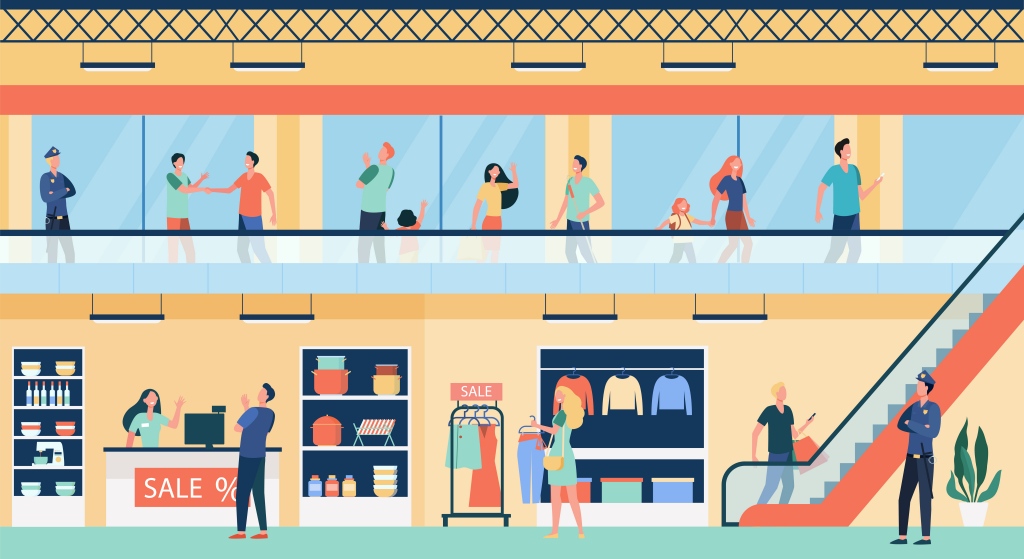XIMIVOGUE Tips on Retail Store Interior Design
Author: Celia| Keywords chosen by Celia
Retail has evolved, and today’s consumers seek more than just a transaction—they’re looking for an experience.
From the entrance to the checkout counter, every detail in a retail store can play a role in shaping a customer’s decision to make a purchase.
So, how can you create a retail space that feels welcoming and encourages shopping? Here are some key retail store interior design tips to get you started.
What is retail interior design?
Retail interior design involves the planning and arrangement of a retail space to attract customers, guide them through the store, encourage engagement with the products, and ultimately influence their decision to make a purchase.

Tips for retail store interior design
The following retail store interior design tips can help you attract more customers and create an environment that encourages both browsing and purchasing.
1. Design an inviting entrance
The entrance is where potential customers form their first impression of your brand and store interiors.
It’s the moment when shoppers make quick judgments about your store based on factors like color, fixtures, lighting, displays, and the overall atmosphere. Therefore, your retail design should create a welcoming environment. Consider offering conveniences like shopping carts, baskets, and extra copies of your weekly specials flyer right at the entrance.

2. Use colors thoroughly
Humans are naturally drawn to visual stimuli. To capture and maintain customers' attention, a retail store should present something visually appealing and engaging.
For instance, warm colors create a cozy, inviting atmosphere, while cool tones promote a sense of freshness. Both can be strategically used in different areas to enhance the overall shopping experience.

3. Simplify and clarify the design
People can only process a limited amount of information at once. In a fast-paced environment, customers won’t engage if they can’t quickly understand what’s being offered.
Adopting a minimalist approach in your retail interior design resonates particularly with customers who prioritize quality over quantity and appreciate the thoughtful simplicity that minimalism embodies.

4. Capture attention with digital signage
Digital signage utilizes advanced screens such as LCD, LED, and projections to display images, videos, media, and information.
Moreover, digital signage can deliver targeted content to specific customer demographics, helping to increase sales. It can also be used to provide product details, display store maps, and more, enhancing the overall shopping experience.

5. Leverage impulse purchasing opportunities
Unintentional attention from consumers is often prompted by external stimuli.
Take advantage of this by transforming your checkout area into a final display. It’s an ideal spot to showcase small, affordable items that customers are likely to add to their purchases on impulse. Plus, this approach ensures your store’s interior design feels cohesive, maintaining its aesthetic through to the exit.

6. Design a path for customers
Design the path in a way that encourages shoppers to move through the store, ensuring they have maximum exposure to all your products.
Consider factors such as the types of items you sell sales counters, and the available space for movement. These elements will shape the traffic flow in your store. A well-planned path not only guides customers but also helps manage foot traffic.


 XIMIVOGUE Fall Hat Ideas for Fashionable Girls in 2025
XIMIVOGUE Fall Hat Ideas for Fashionable Girls in 2025
 XIMIVOGUE Earth Tone Hair Accessories for Autumn 2025
XIMIVOGUE Earth Tone Hair Accessories for Autumn 2025
 XIMI-V Triumphs at the 138th Canton Fair Second Phase
XIMI-V Triumphs at the 138th Canton Fair Second Phase
 XIMIVOGUE Insights on How to Open A Toy Store
XIMIVOGUE Insights on How to Open A Toy Store
 XIMIVOGUE New Store in Peru
XIMIVOGUE New Store in Peru




